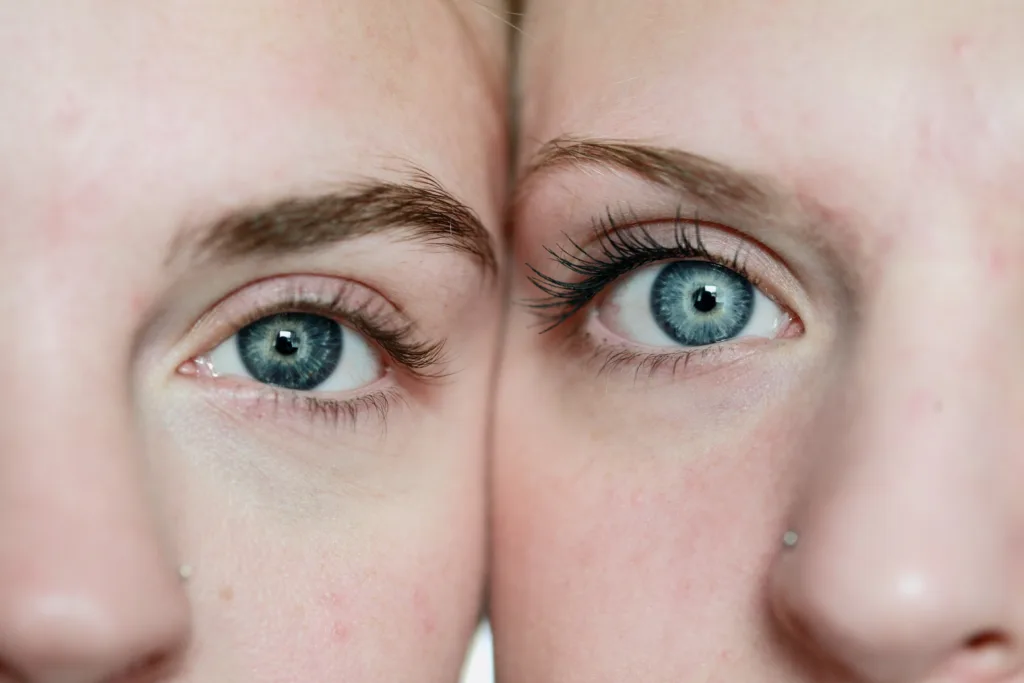Colorblindness, also known as color vision deficiency, is a condition that affects a person’s ability to perceive and distinguish different colors. While there are several types of color blindness, the most severe form is known as achromatopsia, or complete color blindness. This rare condition causes individuals to see the world in shades of grey, black, and white, with no ability to perceive colors at all.
Achromatopsia is a genetic disorder that is present from birth. It is caused by a mutation in the genes responsible for producing the photopigments in the cones of the eye, which are responsible for detecting and perceiving colors. In individuals with achromatopsia, the cones are either missing or non-functional, resulting in the complete absence of color vision.
Although achromatopsia is extremely rare, affecting only about 1 in 33,000 people, it can have a significant impact on an individual’s daily life. Those with complete color blindness rely heavily on other visual cues, such as brightness and contrast, to navigate and make sense of the world around them. Simple tasks that most of us take for granted, such as distinguishing between ripe and unripe fruits or matching clothes, can become challenging and frustrating for individuals with achromatopsia.
In addition to achromatopsia, there are other types of color blindness that are more common. The most prevalent form is called red-green color blindness, which can be further categorized into two subtypes: deuteranomaly and protanomaly. Deuteranomaly makes green appear more red, while protanomaly makes red appear more green and less bright. Individuals with these types of color blindness have difficulty distinguishing between certain shades of red and green but can still perceive other colors to some extent.
Another type of color blindness is called blue-yellow color blindness, or tritanopia. This condition affects the ability to differentiate between shades of blue and green, as well as yellow and violet. Individuals with tritanopia may see these colors as shades of grey or have difficulty distinguishing them from one another.
It is important to note that color blindness is not a form of blindness in the traditional sense. People with color blindness can still see and perceive objects, shapes, and textures, but their ability to differentiate between certain colors is impaired.
Color blindness is a condition that affects a person’s ability to perceive and distinguish colors. While achromatopsia, or complete color blindness, is the most severe and rare form, there are also other types of color blindness that affect the perception of specific colors. Understanding color blindness can help create a more inclusive and accommodating environment for individuals with this condition.
Can You Be Colorblind To Black And White?
It is not possible to be colorblind to black and white. Color blindness, also known as color vision deficiency, refers to the inability to perceive certain colors or differences in colors. However, the term “colorblindness” can be misleading because it does not mean that a person cannot see any colors at all.
Color vision deficiency is usually caused by a genetic condition that affects the cones in the retina of the eye, which are responsible for detecting different wavelengths of light and perceiving colors. There are different types of color blindness, such as red-green color blindness and blue-yellow color blindness, where individuals have difficulty distinguishing between certain colors.
Achromatopsia, on the other hand, is a rare condition that results in complete color blindness. People with achromatopsia see the world in shades of grey, black, and white, but they can still perceive differences in brightness and contrast. It is important to note that achromatopsia is a distinct condition from other types of color blindness.
While it is possible to have color vision deficiencies that affect the perception of certain colors, it is not possible to be colorblind to black and white. Color blindness typically involves difficulty distinguishing between specific colors, while achromatopsia is a rare condition that results in complete color blindness.

What Are The 3 Types Of Colorblindness?
The three types of color blindness are deuteranomaly, protanomaly, and protanopia/deuteranopia.
1. Deuteranomaly: This is the most common type of red-green color blindness. People with deuteranomaly have difficulty distinguishing between the colors green and red. In their perception, green appears more like red. This condition is caused by a partial loss or alteration of green-sensitive cone cells in the eyes.
2. Protanomaly: Individuals with protanomaly have difficulty differentiating between red and green, but their perception is slightly different from those with deuteranomaly. In this case, red appears more greenish and less bright. Protanomaly is also caused by a partial loss or alteration of red-sensitive cone cells in the eyes.
3. Protanopia/Deuteranopia: These two types of color blindness render individuals unable to distinguish between red and green at all. People with protanopia see red as a shade of gray, while those with deuteranopia perceive red as greenish. Both conditions are caused by a complete absence of either red-sensitive (protanopia) or green-sensitive (deuteranopia) cone cells in the eyes.
It’s important to note that color blindness can vary in severity, and some individuals may have milder or more severe forms of these types.
What Are The 7 Types Of Color Blindness?
There are actually three main types of color blindness, which are further divided into four subtypes. Here are the seven types of color blindness:
1. Monochromatism: This type of color blindness is the most severe, where individuals see the world in shades of gray. It occurs when all three types of cones in the eyes are absent or non-functional.
2. Dichromatism: This type of color blindness occurs when one of the three cones in the eyes is missing or not functioning properly. It can be further classified into three subtypes:
A. Protanopia: Individuals with protanopia have difficulty perceiving red light. They often confuse red with green and see these colors as shades of gray.
B. Deuteranopia: Individuals with deuteranopia have difficulty perceiving green light. They also struggle with differentiating between red and green and see them as similar shades.
C. Tritanopia: Individuals with tritanopia have difficulty perceiving blue light. They often confuse blue with green and yellow and see these colors as shades of gray.
3. Anomalous Trichromatism: This type of color blindness is less severe than the previous types. It occurs when all three cones are present, but one of them is not functioning properly. It can also be further classified into three subtypes:
A. Protanomaly: Individuals with protanomaly have a reduced sensitivity to red light. They perceive red as more dim or faded compared to individuals with normal color vision.
B. Deuteranomaly: Individuals with deuteranomaly have a reduced sensitivity to green light. They perceive green as more dim or faded compared to individuals with normal color vision.
C. Tritanomaly: Individuals with tritanomaly have a reduced sensitivity to blue light. They perceive blue as more dim or faded compared to individuals with normal color vision.
It’s important to note that the severity and specific color perception differences can vary among individuals with color blindness.
How Rare Is It To See In Black And White?
Total color blindness, also known as achromatopsia or monochromacy, is an extremely rare condition affecting approximately 1 in 33,000 individuals. This means that only a small fraction of the population, about 0.003%, experiences the world in black and white.
To put it into perspective, in a crowd of 33,000 people, you would likely be the only one with total color blindness. This condition is considered the most severe form of color deficiency, where individuals are unable to perceive any colors and can only see shades of gray, along with black and white.
The rarity of total color blindness can make it quite challenging for those affected to navigate a world that is predominantly designed with color cues. Simple tasks such as distinguishing between traffic lights or selecting ripe fruits can become difficult or even dangerous.
It is important to note that total color blindness is different from the more common forms of color blindness, such as red-green color blindness. In those cases, individuals have a limited ability to perceive certain colors, but they can still see a range of hues.
Seeing in black and white is an exceedingly rare condition, affecting only a small fraction of the population. Those with total color blindness perceive the world in shades of gray, black, and white, making everyday tasks that rely on color differentiation more challenging.
Conclusion
Colorblindness is a condition that affects an individual’s ability to perceive and distinguish colors. There are different types of colorblindness, including achromatopsia, which is the most severe form and results in the inability to see any colors, only shades of grey. Other types, such as deuteranomaly, protanomaly, protanopia, and deuteranopia, affect the perception of red and green colors.
Colorblindness is relatively rare, with achromatopsia occurring in a small percentage of the population. It is important to understand that colorblind individuals see the world differently, and their experiences of color are limited or absent. This condition can have various impacts on daily life, including difficulties in certain professions or activities that rely heavily on color perception, such as art or design.
While colorblindness cannot be cured, there are adaptive strategies and technologies that can assist individuals in navigating their environment. For example, colorblind individuals may use color-correcting glasses or apps that help them distinguish colors more accurately.
Colorblindness is a unique condition that affects individuals in different ways. It is important to raise awareness and promote understanding and support for those living with colorblindness to ensure inclusivity and equal opportunities for everyone.
